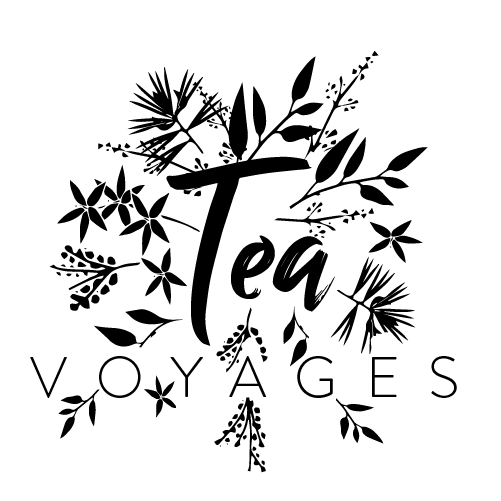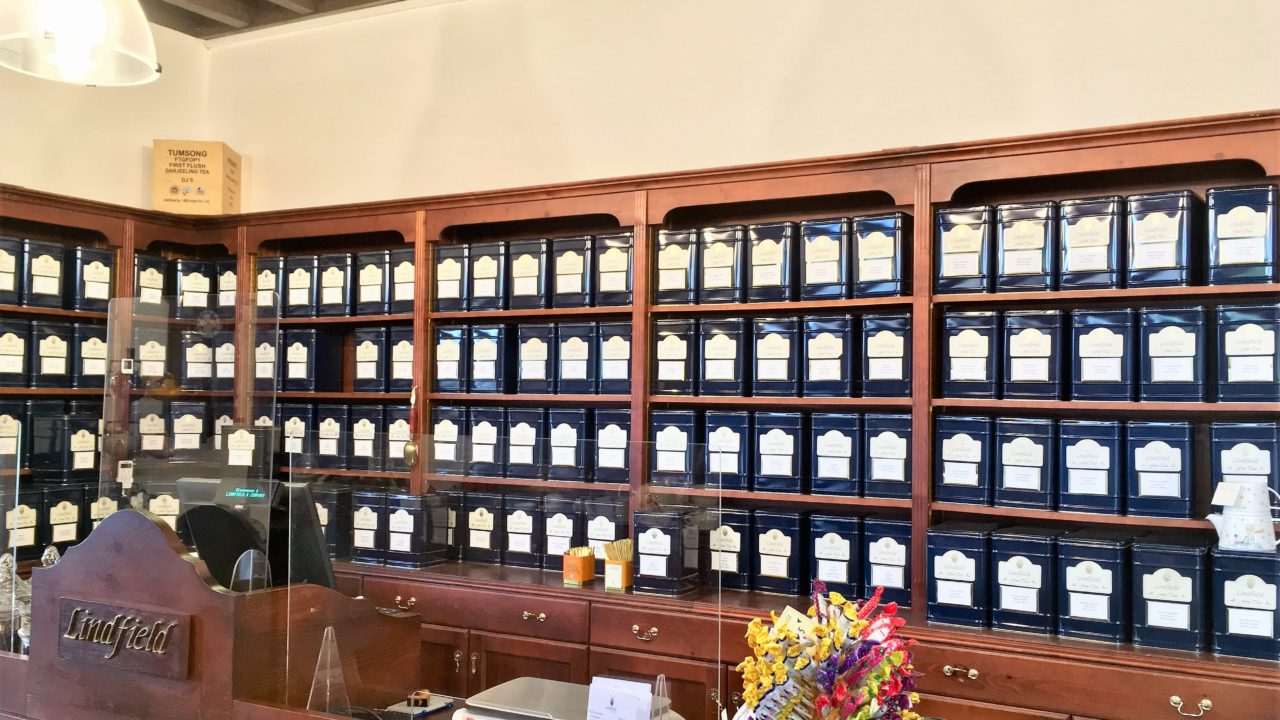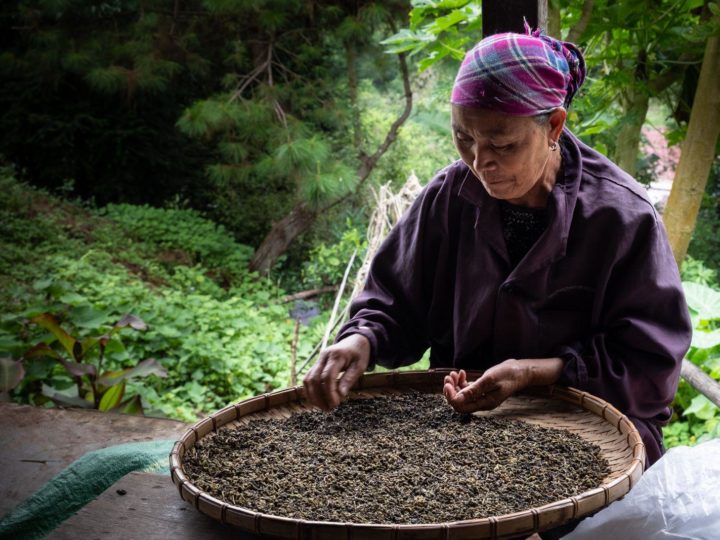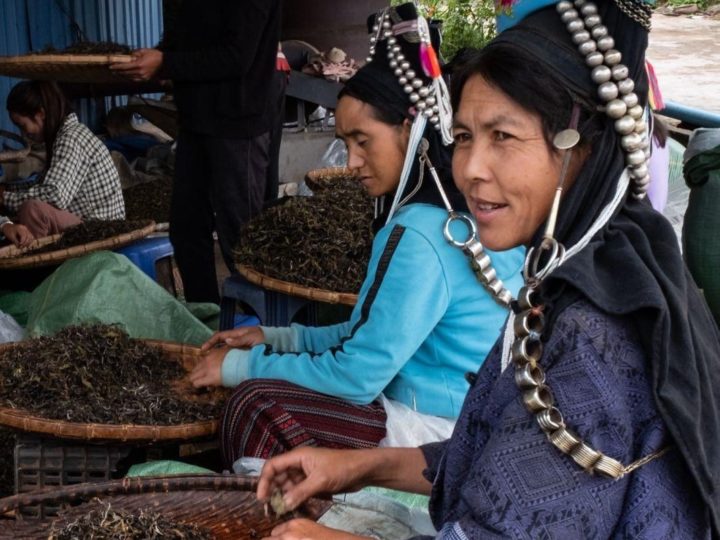Une version française de cette interview est disponible ici
During the two decades they had spent in Great-Britain, Claudine and Jean-Bernard Renaudineau gave free rein to their passion for tea. Ultimately, they brought it back to their hometown in Dinard (in the Ille-et-Vilaine department), a city where the Anglo-Saxon influences of the mid-19th century are still largely palpable. It’s been twenty-five years since they founded Lindfield, a venture named after the town in Sussex where their tea journey began.
A trip to Dinard gave us the chance to meet them and know more about Gwenn ha Du, a tea of their own design and manufacture. Most interestingly, throughout our conversation, they generously shared their views and experience on the lifestyles of tea in Brittany compared to Great-Britain.
TeaVoyages.com: What prompted you to start Lindfield?
Jean-Bernard Renaudineau: My wife and I were living in Great-Britain where we had very different kinds of jobs. She was teaching, I was in finance control. But our weekends were spent in tea rooms or visiting the old headquarters of 19th century tea trade companies, such as the Camellia PLC which had exploited a tremendous number of plantations and had exported a lot of tea to Great-Britain. We met families of planters who had exploited tea plantations in the colonies.
By 1995 – 1996, we had to come back to France. Finding a position similar to the one I had held meant that I would have to live in Paris, but the perspective to settle in a big city was not really appealing to me. So, we decided to come back to our region. We then realized there were too few good teas sold in Brittany, and that’s how our project started.
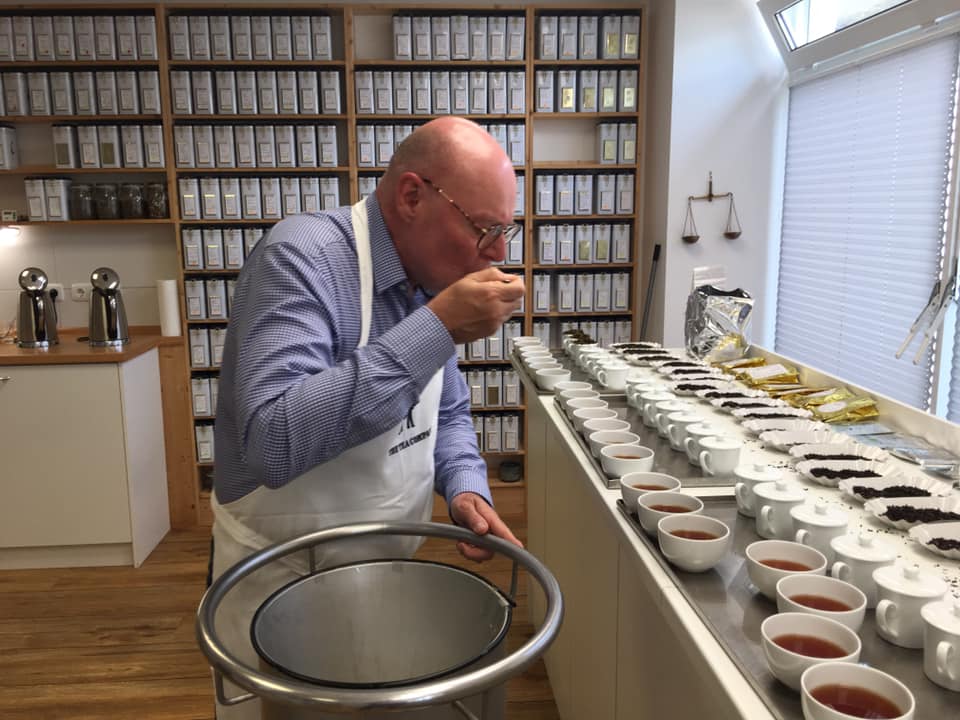
What differentiates the art of tea in Britain and in France?
J-B.R.: Firstly, the level of tea trade in Great-Britain developed at a much larger scale than anywhere else thanks to the East India Company.
At that time, the British developed the cultivation of tea en masse, while the French preferred coffee or chocolate. Tea was appreciated too but to a lesser extent.
In my view, the tremendous influx of tea in the Western world is associated with the Industrial Revolution. Handmade manufacture based on wok was superseded by machinery, Indian rolling machines. Then, the assignments of Robert Fortune who managed to bring bulbs, plants, people to grow tea in India largely contributed to it as well. This explains how the British became important tea importers.
On their end, French people’s interest was geared towards coffee, Bourbon Arabica. In France, the tea sector developed mainly through apothecaries.
How about the second point?
J-B.R.: The second point is economic and historical. With the decrease in tea price in Great-Britain, it became an affordable commodity even to the most deprived ones. Since then, British people are not used to the price tags found on the Continent. High-quality teas commercialized in France represent a niche there. In England, tea drinkers paid very little for a cup of tea, no more than a few pence.
British consumers are used to a standardized product while French tea drinkers are more curious and willing to explore a variety of fragrances.
In Great-Britain, the economics aspect takes precedence over taste. In this regard, the blends were invented to standardize the manufacture.
Claudine Renaudineau: British people’s consumption of tea is akin to drinking water, it’s more quantitative than qualitative. We ran a tea room for several years and noticed that
the French amateur of tea constantly attempts to make assemblages by matching their pastries with their tea. This refinement is part of their interest in flavored teas.
What evolutions in the British consumers’ tastes have you observed?
C.R.: Some of our friends in England are really passionate of specific renowned tea gardens. There are teas they were very fond of but consumed much less over time, notably some English blends, whose manufacture has progressively changed and relied on Kenyan teas.
J-B. R.: After 1947 and the Independence of India, they could not rely on Indian terroirs any longer so they adapted their supply chain and started to grow Camellia Assamica in Africa.
C.R.: Hence, a shift in the recipes.
We nonetheless have a Victoria Blend which conforms to the teas of the 19th century. Our British blends are the results of our on-field research in the plantations, at the Tea Drinkers Club in India. We strived to recapture the fragrances and tastes of the Victorian era which were appreciated for the sophisticated assembling of various tea gardens.
You have designed and manufactured Gwenn ha Du, a tea that captures the taste of Brittany. Why did it take you a year to complete it?
C.R.: It took us a year to find the right balance between the ingredients, with the organic algae of Saint-Malo, buckwheat, heather, and the apple notes. It took time to reach completion because we initially started off with Plougastel strawberries, and it didn’t work at all.
In all humility, I suggested to my husband “why not try with apples?”. When we bake galettes, we do incorporate pieces of apples. Then, the rest unfolded very smoothly. We caramelized the apples, and to obtain the taste of caramel with salted butter, we used the algae which drops this particular note without a single grain of salt added.
J-B. R.: As tea importers and wholesalers, we thought we had to create something that could reflect the specificity of Brittany.
Heather, the flower of Brittany, as well as buckwheat, pieces of apple rolled in caramel, the salted touch of the Saint-Malo algae, are all emblematic of Brittany.
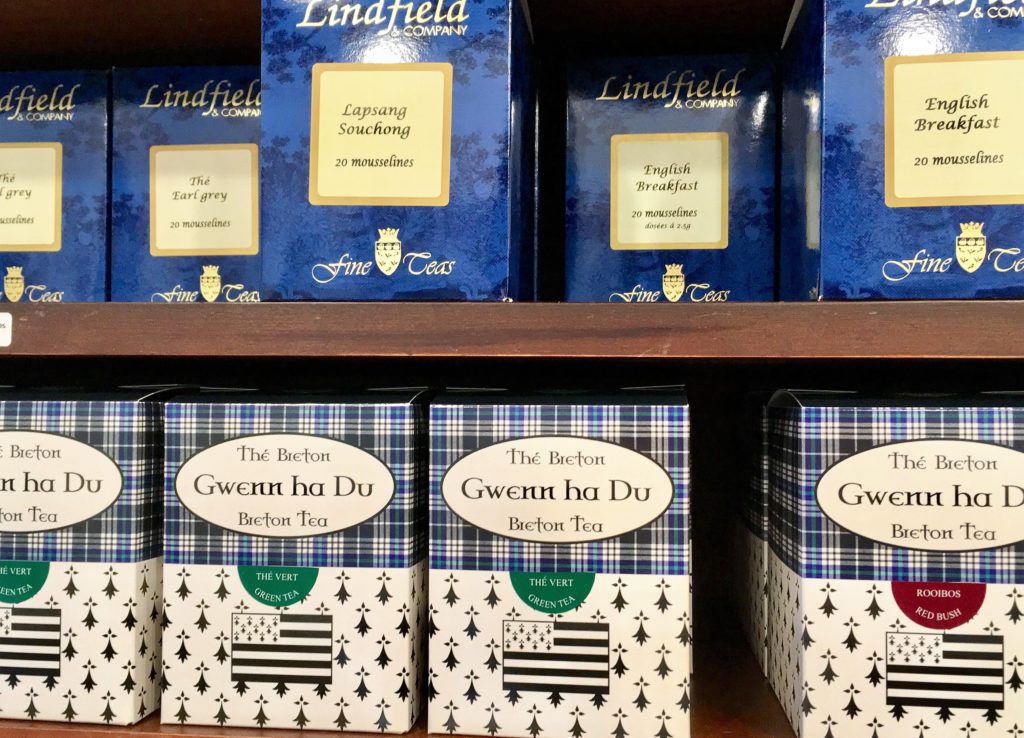
When did you realize the recipe was finalized?
C.R.: After carrying out our own tests in our lab, we had it tasted by a panel of experts during a gala at the Rotary club. We didn’t say anything prior, we served it and asked what they thought of it. Then, we finalized our recipe based on their remarks and feedbacks. There was no room allowed for failure as it was about representing Brittany, and it ended up successfully.
This tea can be found in green tea, black tea, rooibos… why is that?
C.R.: Our customers have various tastes. Some prefer rooibos, others like black or green tea better. Our aim at Lindfield is to explain to our customers the variety of teas and give them a chance to try and appreciate them, even with a sample. Moreover, because of the substantial nature of buckwheat this tea stands on its own, if you will. Gwenn ha Du could satisfy a sudden sweet-tooth envy without actually eating anything sweet.
What’s the best way to approach flavored teas and to appreciate them?
C.R.: For a person who prefers single origin teas,
it is certainly better to have a cup of flavored teas in the afternoon as a replacement for a cake or in addition to some snacks.
For a person who is not naturally geared towards flavored teas, it is preferable to avoid it in the morning or the evening. In these two moments of the day, the body yearns for flavors and tastes that naturally resonate with it. But in the afternoon, if you want to indulge in some caramel or cinnamon, it might be a bit different.
That being said, I am convinced that our subconscious mind keeps in store various tastes that we love, whether related to cakes, fruits… and from this standpoint, it is possible to find something that suits our taste in flavored teas.
So why not treat yourself with a vanilla scented tea made of pure vanilla pods during your afternoon tea time…
How can one recognize a flavored tea of good quality?
J-B. R.: It’s really a matter of taste but the quality of the ingredients is crucial. Once the quality of the tea base is secured, it’s about using the best aromas one can find, as well as additional products such as orange peel or algae. Then comes the tea manufacture itself, an important step that ensures we provide our customers with the most satisfactory product possible.
What differentiates a tea from Brittany from a tea from Great-Britain?
C.R.: Brittany has not developed a particular tea culture, so a fancy product like the Gwenn ha Du can really carve a place for itself. It’s a nicely crafted product, a tea that is revisited and seasoned with various Breton ingredients.
As I see it, a tea of Great-Britain is of course a Breakfast tea, “a dash of milk, strong tea”. It is tannic, robust, not so much into finesse. It gives you a boost in the morning but can also give you a sense of calm in the afternoon.
I was very close to an Irish lady in her nineties who lost her husband tragically. I asked her “but wasn’t it a very lonely and panicking moment back then?”. I still recall her words: “I went to the kitchen, prepared myself a cup of tea and waited for my children to come”. This is the typical British phlegm that I particularly love.
So, when they tell you ‘let us have a cup of tea’, it’s the total opposite of a Latin who will prefer to ‘have a quick shot of coffee’. To an English person, it’s a religious moment, a break time, the Earth can rotate in all directions at the same time, they will certainly not have a cup of tea hastily and fleetingly, they will settle down. That is their culture.
This is different from a tea from Brittany which allows for a zest of fanciness, one can indulge in casually.
What commonalities do French and English tea drinkers share?
C.R.: When it comes to the finesse of tea, tea drinkers, whether French or English, will know how to make the difference. They know what they like and do not like, each one with their own specificities. English tea drinkers will most probably add a dash of milk to their tea. Some of my friends who turned to organic and became vegan, show interest for Japanese green teas. French tea drinkers consume tea as a health care practice hence an interest for ‘detox’ teas. Moreover, French people are used to themes: Christmas teas, Easter teas, Valentine’s teas, etc. English people are more attached to tea as a staple and less to themes. In their views, an Easter tea can be had any time of the year.
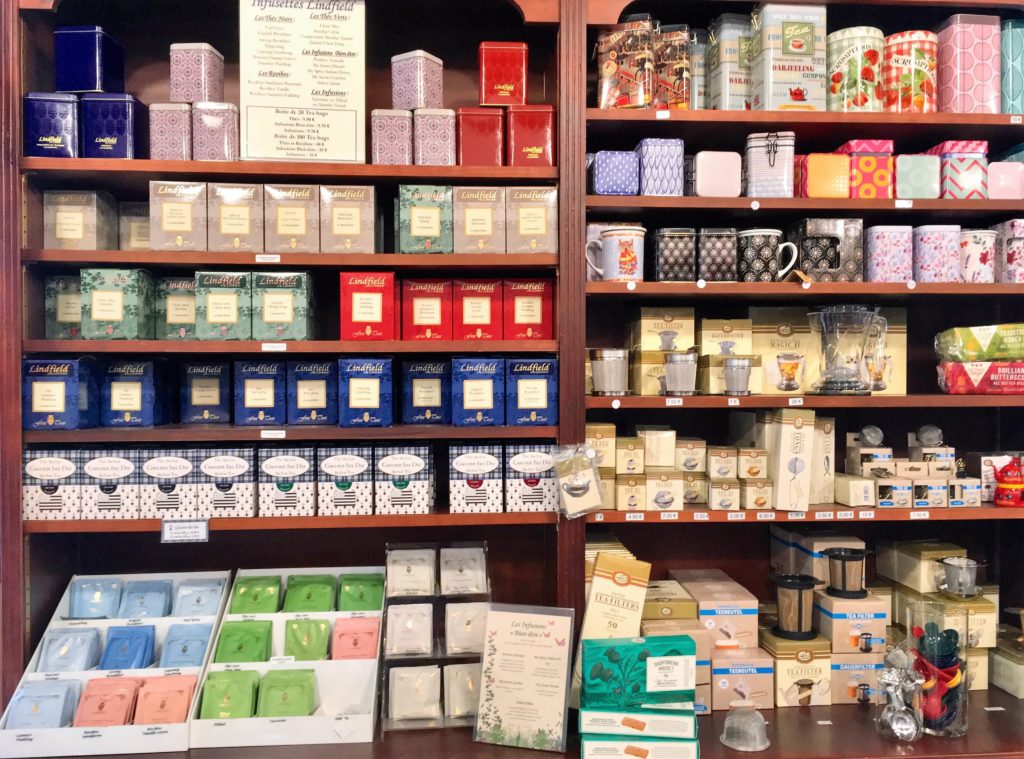
Since the beginnings of your venture, what changes have you observed?
C.R.: Tea knowledge and the notion of tea gardens are some of the elements our customers in Dinard have increasingly become aware of. For instance, many thought that a Ceylon Kenilworth tea from a particular prestigious brand could not be found in any other place. Many of them thought that there were only one Ceylon tea, one Darjeeling tea, or one Assam tea, and didn’t know there were several crops throughout the year. Many Parisians turn to us because we take the time to explain and teach them. On the technical sheets that are available on our website, we explain the choice of each plantation. We give a lot of attention to such details because we run a small independent business. This is one of our strengths.
Another trend we notice comes from hotel schools who finally understand that a four or five-star hotel can no longer serve a Lipton tea.
How about tea amateurs’ expectations?
C.R.: There is a growing interest for orthodox teas, single origin teas, natural products. Flavored teas, such as vanilla scented teas, are still much appreciated to treat oneself from time to time. Many look for British breakfast teas. Most of the time, they want to recapture a flavor they experienced during a previous stay in Great-Britain or at their grandmother’s place because it was a generation that knew how to appreciate a certain quality of tea.
J-B. R.: We consider we did a good job when a customer opens up to non-flavored teas, like a Rou Gui, or an oolong rock tea. Some resellers that we train for free have progressively shifted from flavored teas to single origin teas.
The richness of single origin teas remains largely unknown to many tea drinkers. We see our role as partaking in the same quest as our customers: excellency, that Japanese call chadō, or chajing in Chinese author Luyü’s words. Just like wines, the world of tea is comprised of numerous varietals, terroirs, climates, ways of assembling, etc. and our role is no different from a cellar master who gives advice to his clients according to their tastes, preferences and expectations, as well as recommendations on the best quality/price teas.
